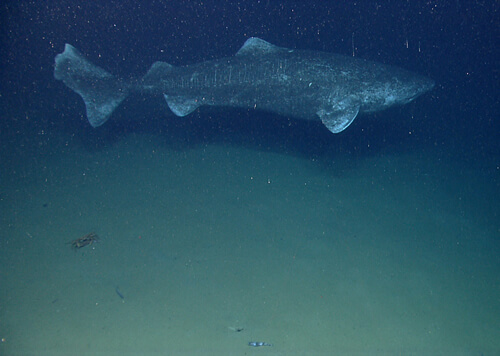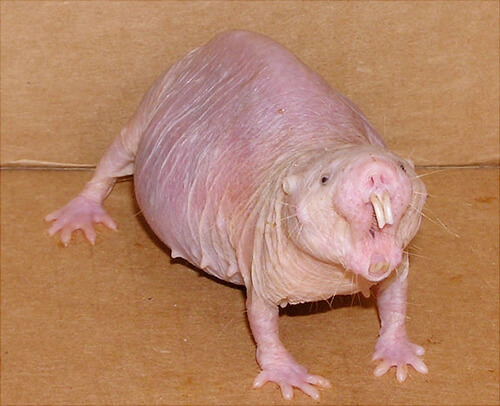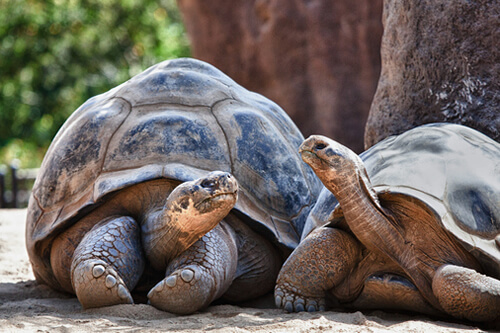The secret to longer life? Animals have the answers
Key Takeaways
The proverbial quest for the fountain of youth has led researchers to the animal kingdom. It is there that one can find bowhead whales, with an average lifespan of 200 years; ocean quahogs, some of which have been calculated to be over 400 years old; and black coral in the Gulf of Mexico that can live to be 2,000 to 4,265 years old.
Through studying these and other animals known for their longevity, scientists hope to uncover exactly what helps them live so long, resist diseases such as cancer, and control their metabolism to better conserve energy—and survive—under extreme conditions.
Here's a look at some of the animals that may teach us a thing or two about how to live a long, healthy life:
Greenland sharks: Age defying

- Measuring in at over 16 feet, the mysterious Greenland shark (Somniosus microcephalus) is not only one of the world's largest sharks, but has the longest life expectancy of any vertebrate animal in the world.
- Greenland sharks are also at an extremely low risk for cancer and infectious diseases, perhaps due to their unusual immune systems. White blood cells, produced in the bone marrow, are the hallmark of the human immune system. Greenland sharks have no bones, and therefore, neither bone marrow nor white blood cells.
- These huge animals live in the Atlantic Ocean, from Canada to Norway, in temperatures around 29° F. They do not reach adulthood until the age of 150, and spend their lives 2,000 meters undersea. Their heart rate is about one beat every 12 seconds.
- Because Greenland sharks grow only a few centimeters over several years, their age cannot be determined in the usual ways used in other fish.
- Marine biologists at the University of Copenhagen, Denmark, have recently determined that these sharks have a life expectancy of 272 years through carbon-14 dating of the sharks' eyes. They published their results in Science. "Our lifespan study is based on the carbon-14 dating of Greenland shark eye lenses. As with other vertebrates, the lenses consist of a unique type of metabolically inactive tissue. Because the center of the lens does not change from the time of a shark's birth, it allows the tissue's chemical composition to reveal a shark's age. We use well-established radiocarbon methods, but combine them in a new way. This approach, along with the extraordinary ages for these sharks makes this study highly unusual," according to main author Julius Nielsen, MSc, PhD student, Department of Biology, University of Copenhagen.
- Carbon-14 dating is usually used in archaeology, as a way of determining the age of certain artifacts of a biological origin up to 50,000 years old. This method of carbon-14 dating the lenses of the eye has previously been used to determine the age of whales, which are mammals. This is the first time it has been used to determine the life expectancy of fish.
- Researchers at The Arctic University of Norway, Tromsø, Norway, are currently DNA-sequencing samples from the fins of 100 Greenland sharks that are at least 300 years old, and will compare their DNA to that of other shark species. They hope to identify the possible genetic mutations present in Greenland sharks that help stop cancer cells and fight off infection from bacterial and viral pathogens. They have sequenced the full genome from these 100 sharks, and studies are ongoing.
Naked mole rats: Energy diversion

- Naked mole rats can live up to 31 years, decades longer than other rodents.
- Breeding may extend their life expectancy. Only one queen mole rat per colony is chosen and allowed to reproduce with only one male. However, a non-breeding male may advance to become a breeder. Scientists at The Leibniz Institute on Aging, Jena, Germany, are studying how these non-breeding males are chosen to become breeders. They found that the signal pathways involved in the transition of non-breeding to breeding males are also involved with the aging process. Males chosen for breeding have higher-than-normal amounts of energy in their testes cells and lower-than-normal amounts in their skin cells. Scientists postulate that this diversion of energy may have a role in delaying the aging process.
- Mole rat mitochondria have a reduced respiratory rate compared with other rodents, such as guinea pigs. This translates to making less energy and using less fuel and oxygen.
- Their preferred energy source is not carbohydrates or sugars as used by other rodents; rather, naked mole rats prefer lipids or fats as their energy source.
- Naked mole rats have an abnormally low basal body temperature, which has been associated with longevity; they are also not warm-blooded, unlike the rest of the denizens of the rodent family.
- Naked mole rat livers have very active pathways to detoxify the body and eliminate damaging chemicals that harm cells and could accelerate aging. This may translate into healthier cells that undergo less damage from toxins.
- Miraculously, naked mole rats can survive almost 20 minutes without oxygen.
- Scientists are also studying the unusual form of hyaluronic acid produced by these animals. The large, de-bonded acid molecules saturate tissues in the naked mole rat, provide antioxidant properties, and block cancer by immediately stopping excess cell growth.
Tortoises and turtles: Energy conservation

- Tortoises (shown here) and turtles are some of the longest-living reptiles. The major difference between them is that tortoises live on land and turtles live in the water some or nearly all of the time.
- Tortoises are the longest-living terrestrial animals, and the oldest one has been found to be 186 years old. Even small turtles, such as box turtles and terrapins—typically kept as pets—can live for up to 30 to 40 years.
- Turtles can live for over 1 year without oxygen. In the absence of oxygen, they can actually drop their metabolism down to nearly nothing to survive by shutting down genes and sub-cellular organelles that require energy or need maintenance. They do this by turning off pyruvate dehydrogenase, an enzyme, and thus turning off their mitochondria. This in turn forces the turtle's body to secrete a protein that protects the cells.
- In low-oxygen conditions, turtles can turn off their stress-response proteins and divert the energy they have to reshape their cells to function differently. This includes preventing cells from digesting and turning over proteins or autophagy, which can produce detritus and cause cellular damage.
- Scientists have long studied turtles and tortoises for clues to their longevity. Senescence, in particular, has become a focus, as have DNA and telomere length. Telomere length decreases with age, and could predict life span. Some researchers have recently found, however, no differences in telomere length between the genomic DNA of embryos and adults of European freshwater turtles.
ADVERTISEMENT